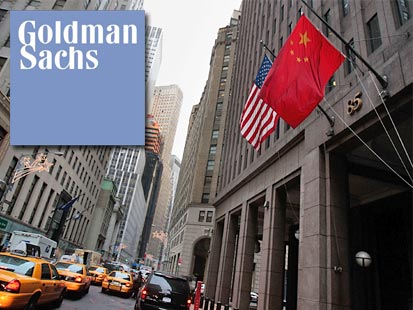Banking, finance, and taxes
Why Oppenheimer Sees Substantial Upside in Goldman Sachs
Published:
When one investment banking firm initiates coverage on a rival firm, some cynical investors may think that the firm is really talking up its view on itself. That has not proven universally true, but Monday did bring a key analyst initiation for Goldman Sachs Group Inc. (NYSE: GS). Oppenheimer started coverage of Goldman Sachs with an Outperform rating, and it assigned a $236.00 price target.
Oppenheimer’s Chris Kotowski was the analyst behind this call. Oppenheimer said that it has been on the sidelines for Goldman Sachs’ stock, mainly because the firm has had a bearish outlook on the trend in fixed income, currencies and commodities (FICC) trading. The firm pointed out that FICC trading accounted for 25% of Goldman’s revenues in 2014, down from 48% in 2009. Overall, industry FICC trading revenues have been down in 17 of the past 22 quarters.
One key issue is that Goldman Sachs’ shares have underperformed in the past few years. The firm noted that its shares were up just 10% since the beginning of 2010, versus about 67% for the KBW Bank Index and 76% for the S&P 500. Kotowski said that the argument that Goldman cannot thrive in this environment is “increasingly sounding like the argument that bumble bees can’t fly.”
ALSO READ: 9 Analyst Stock Picks Under $10 With Huge Upside Calls
Kotowski’s research note said:
Since 2011 Goldman has earned an average operating ROTCE of 11.6% vs. 11.3% for our large bank composite. Goldman Sachs’ ROTCE year-to-date 2015 is 13.7% versus 12.5% for the industry. We expect this pattern to continue in 2015 to 2016, but nevertheless Goldman Sachs trades at 9.2 times forward consensus and 1.1 times its tangible book value versus the industry at 11.8 times (foward earnings) and 1.5 times (tangible book value) on average since 2010.
One key issue here is that Oppenheimer pointed out that Goldman’s revenue mix is rapidly shifting to less capital-intensive businesses. These were shown to be in investment banking, equities and investment management, now accounting for 60% of revenues versus 46% of revenues in 2010.
Investors should keep in mind that Oppenheimer is making a longer-term call. The firm is not signaling anything about the current quarterly report, due in less than a month. Kotowski and his team even trimmed the earnings expectations in the call based on market volatility. The report said:
We stress that our recommendation takes a 12-24 month view and is not about the current quarter’s results. We are in fact cutting our third quarter earnings per share estimate from $5.24 to $4.36 as this summer’s market declines will likely hurt I & L, and comments made by Goldman’s peers at a recent conference indicate that industry FICC revenues will be down again.
Monday’s analyst report also values Goldman Sachs at the lower end of the 70% to 80% relative multiple basis for the commercial banking industry. That would generate 11.8 times as being the fair value, which is how this official $236 price target was set. Kotowski even said that this is a conservative target, considering that Goldman Sachs has generated consistently higher returns than the commercial banking industry.
ALSO READ: 7 Dividend Hikes and Stock Buybacks Too Big to Ignore
Goldman Sachs shares were up 1.5% at $183.85 after the call on Monday in midday trading. That $236 price target compares to a consensus analyst price target of $216.78 and to a 52-week range of $171.26 to $218.77. Another observation is that the highest analyst price target is up at $245.
Retirement can be daunting, but it doesn’t need to be.
Imagine having an expert in your corner to help you with your financial goals. Someone to help you determine if you’re ahead, behind, or right on track. With SmartAsset, that’s not just a dream—it’s reality. This free tool connects you with pre-screened financial advisors who work in your best interests. It’s quick, it’s easy, so take the leap today and start planning smarter!
Don’t waste another minute; get started right here and help your retirement dreams become a retirement reality.
Thank you for reading! Have some feedback for us?
Contact the 24/7 Wall St. editorial team.